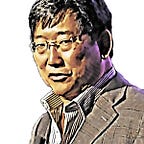Moon Shot Mission: A 2021 Update
The consumer Internet began life in 1969 with four nodes, three in California and one in Utah. We know how the Internet changed how we shop, watch movies and travel. Our moonshot mission, which Dr. Anthony Chang has called a pediatric Internet made history in 2021 as we ended the year with four edge zones, two in California, one in Pennsylvania and one in Italy. We are only beginning to understand how it will transform children’s healthcare, globally.
Special shout out to our early pioneers Cole Hilton, Marc LeLande, Alberto Tozzi, Stefano Scardigno, Bill Feaster, Stefano Pepe, Ray de La Cruz, Adam Gold, Ilir Kullolli, Bill Wilson and Natalie Praegler! Thank you for believing in the vision and helping turn it into a reality.
One of the powers of the edge cloud is using digital twin applications to standardize data coming from the machines. This enables application developers to be creative without worrying about the low level infrastructure. In 2021 we launched BevelCloud Studio to enable those developers. We featured several applications at the first developer conference: Invent 21.
· Teleray’s image sharing application is now available and we’re already working on enabling sharing of streaming ultrasound data. Thanks to CEO, Tim and CTO, Cody. Check out the short video from Invent21 for more information.
· Oomnitza, who is a market leader in enterprise technology management, has extended their application to provide enterprise wide management of all the healthcare machines. They also just raised a $12.5M B round. Learn more.
· Kudos to Ronny and the Dyad Medical team, who were one of the first three applications. They just got FDA approval for their CT/MRI application. Learn more.
· We’ve engineered for security and privacy from Day 1. One big concern for anyone using center cloud service is de-identification of image data. Glendor has developed an application to do that automatically, at the edge, so it never leaves the building with PII burned into the image. Learn more.
· Learning at the edge is another way to preserve privacy. We’re working with a number of teams to move federated learning out of the lab into production. Learn more.
· The first research application is Stanford’s EchoNet Peds application. Check out Dr. Charitha Reddy’s American Heart Association presentation.
Plans for 2022
We are in active conversations to add 16 more edge zones in the early part of the year, which will exceed the number of zones any of the center cloud providers have implemented. Furthermore we’re targeting all six continents, although some on the team would like to make it seven.
Not only are we working to add more zones, but also more digital twins to cover nearly all of the imaging machines (ultrasound, CT, MRI, Xray). In addition, there is early work in digital twins for EKG machines, blood glucose monitors, and drug infusion pumps. New digital twin applications enable new applications. Several areas of interest include AI apps for advanced ventricular strain analysis of cardiac MRI as well as AI based scoliosis detection.
Future
We had a conversation with an AI team at Mitre a week ago. We all agreed that artificial intelligence applications hold the promise of improving the quality and reducing the inequity in children’s healthcare whether in rural America or across the world. But, training AI applications require data. So where is the data?
· The data is not in the EMR/EHR it’s in the healthcare machines. Every hospital has 10x the number of healthcare machines as they have clinicians, and these machines will increasingly stream data. Healthcare machines could easily be generating a 1TB of data every day, a fraction of that is in the EMR/EHR.
· Don’t put the data in a central repository. In the world of enterprise software we’ve learned once you build an application, you lock in a schema. Once you lock in a schema, building the second application is difficult. Furthermore, central repositories fly in the face of the privacy fundamentals of purpose limitation and storage minimization.
· Move from batch to continuous learning. Today, we have the AI engineers work for weeks or months to develop the neural network and then are faced with the question of how do we measure drift? and when should we re-learn? As neural networks are based in how our brains work, it’s interesting to note we don’t learn in batch mode, we learn continuously. Shouldn’t this be how the future looks?
We’ll conclude this update with a quote from Iain Hennessey, Director of Innovation Alder Hey Children’s Hospital in the UK:
“What if we could create a network of not just humans, but the very equipment and data systems that they use. This would create a living, learning health system that is always on, always sharing and never ending. It would be a virtual nervous system that mimics biology in its ability to sense and then process information at a local and a higher level. Making a real impact on the health of the world’s children.”
None of our progress in 2021 would have been possible without the amazing contributions of the entire BevelCloud team in particular Alastair, Trent, Travis, Janet, Mirena, Larry, David and Julee. And thanks to many of you on this distribution list who have helped in small and large ways.
If any of your would like to learn more or contribute, let us know.
In the meantime, have a great 2022.
Tim
